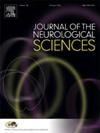肢带性肌营养不良D3:第一个北美家族和文献综述
IF 3.2
3区 医学
Q1 CLINICAL NEUROLOGY
引用次数: 0
摘要
D3型肢带肌营养不良症是一种罕见的迟发性肌营养不良症,迄今为止仅在欧洲、南美和亚洲人群中发现。在这里,我们提出了北美第一个LGMDD3家族的索引患者。我们回顾这种疾病,并强调常见和不常见的临床特征。我们还讨论了疾病发病机制的新见解。本文章由计算机程序翻译,如有差异,请以英文原文为准。
Limb-girdle muscular dystrophy D3: The first North American family and review of the literature
Limb-girdle muscular dystrophy type D3 is a rare, late-onset muscular dystrophy that has, to date, only been identified in European, South American, and Asian populations. Here we present the index patient of the first North American family with LGMDD3. We review this disorder and highlight both common and uncommon clinical features. We also discuss new insights into disease pathogenesis.
求助全文
通过发布文献求助,成功后即可免费获取论文全文。
去求助
来源期刊

Journal of the Neurological Sciences
医学-临床神经学
CiteScore
7.60
自引率
2.30%
发文量
313
审稿时长
22 days
期刊介绍:
The Journal of the Neurological Sciences provides a medium for the prompt publication of original articles in neurology and neuroscience from around the world. JNS places special emphasis on articles that: 1) provide guidance to clinicians around the world (Best Practices, Global Neurology); 2) report cutting-edge science related to neurology (Basic and Translational Sciences); 3) educate readers about relevant and practical clinical outcomes in neurology (Outcomes Research); and 4) summarize or editorialize the current state of the literature (Reviews, Commentaries, and Editorials).
JNS accepts most types of manuscripts for consideration including original research papers, short communications, reviews, book reviews, letters to the Editor, opinions and editorials. Topics considered will be from neurology-related fields that are of interest to practicing physicians around the world. Examples include neuromuscular diseases, demyelination, atrophies, dementia, neoplasms, infections, epilepsies, disturbances of consciousness, stroke and cerebral circulation, growth and development, plasticity and intermediary metabolism.
 求助内容:
求助内容: 应助结果提醒方式:
应助结果提醒方式:


